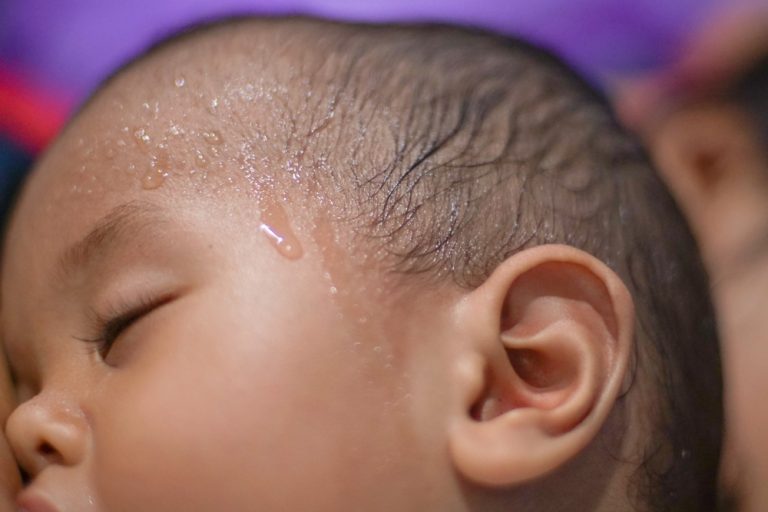Babies Are Born Without Which Body Part? Infant Anatomy
Have you ever wondered what unique characteristics make up a newborn’s body? What sets them apart from adults, and how do they develop into the fully formed individuals we know and love? Well, get ready to be amazed as we take a deep dive into the captivating world of infant anatomy. Do you know babies are born without which body part?
It’s just one of the many intriguing facts we’ll uncover as we explore the complex and fascinating process of human growth. Join us on a journey to discover the secrets of newborns’ bodies and gain a comprehensive understanding of the wonders of infant anatomy.
This intriguing revelation sparks questions about the intricate process of human growth and the unique characteristics of a newborn’s skeletal system. Understanding the reasons behind this phenomenon sheds light on the complexity of early development and the gradual progression towards full body maturity.
In this informational article, we delve deep into the scientific insights behind this topic, touching on related areas such as skeletal development, birth defects, and prenatal care. Join us on a journey to uncover the truth behind babies are born without which body part and gain a comprehensive understanding of this captivating aspect of infant anatomy.
Babies Are Born Without Which Body Part?

Did you know that babies are born with underdeveloped kneecaps? Although they have a cartilage structure that serves a similar purpose, the kneecap or patella doesn’t fully ossify into bone until they reach the age of 3-6 years old.
This fascinating fact plays a significant role in a baby’s flexibility and enables smoother movement in their knee joint during their early stages of development.
As they continue to grow and start putting more weight on their legs, the cartilage hardens to provide the stability required for activities like walking and running.
Babies and Kneecaps: Separating Fact from Fiction
When it comes to babies and their adorable little bodies, there are numerous fascinating facts to uncover. Among the many questions that arise, one intriguing topic is the presence or absence of kneecaps in newborns. It is a widely held belief that babies are born without kneecaps, but is there any truth to this claim? Let’s dive into this common misconception and separate fact from fiction.
Contrary to popular belief, babies are actually born with kneecaps. However, these kneecaps are not fully developed at birth. Rather, they exist as a cartilaginous structure in the knees, which gradually ossify and transform into solid bone over time. This process, known as ossification, occurs gradually as part of the normal growth and development of infants.
During their early months, babies’ kneecaps consist of soft, pliable cartilage that allows for flexibility and growth. This cartilaginous structure plays a crucial role in the longitudinal growth of the limb bones. As the baby grows and begins to walk, crawl, and explore their world, the kneecaps gradually harden and become bony.
It is important to note that the timing of kneecap ossification can vary from one child to another. While most infants have fully developed kneecaps by the age of 4, the process may continue up until the age of 6. This gradual ossification is a normal part of the infant’s skeletal development and should not cause concern.
Now that we have clarified the truth about babies and kneecaps, it is essential to dispel any misconceptions or myths about their absence. Babies are indeed born with kneecaps; they are simply in a developmental stage and will continue to grow and mature over time.
Remember, each baby’s growth and development is unique, and while some milestones may align with suggested timelines, variations are perfectly normal. So, the next time you marvel at a baby’s adorable little knees, you can appreciate the wonder of their developing kneecaps and the amazing journey of growth they are experiencing.
An Overview of Developmental Infant Anatomy

As we marvel at the miracle of life, it’s important to understand that newborns have a unique anatomy that sets them apart from adults. Let’s delve into the developmental anatomy of these tiny humans and explore the fascinating features that characterize their bodies.
Head and Skull Development
At birth, a baby’s head is relatively large compared to the rest of the body. This size difference is due to the rapid growth of the infant’s brain during the prenatal period. The fontanelles, commonly known as soft spots, are areas of the skull where the bones haven’t fully fused together yet. These soft spots allow for flexibility during delivery and accommodate the further growth of the brain in the first year of life.
Skeletal System
Babies are born with an incompletely formed skeletal system. Their bones are softer and more flexible compared to that of adults. This flexibility is essential for the birthing process and allows for the slow progression of ossification, the process of bone hardening, over time. During the first few years of life, the bones gradually become stronger and denser, providing support for the growing body.
Muscular Development
Newborns have limited muscle strength and control. Their muscles are still developing, and it takes time for them to gain the coordination and strength needed for various movements. As babies grow, their muscles gradually strengthen through physical activity and development milestones such as crawling, standing, and walking.
Digestive System and Reflexes
The digestive system of newborns is adapted to a liquid diet. Infants have a reflex called the suckling reflex, which enables them to feed by instinctively latching onto a nipple or bottle. As they continue to grow, their digestive system matures, allowing for the introduction of solid foods.
Sensory Perception
While babies’ sensory perceptions are fully functional at birth, their ability to interpret and make sense of the world around them develops over time. Sight, hearing, taste, smell, and touch all play crucial roles in a baby’s early interactions with their environment, laying the foundation for their sensory development.
Understanding the unique developmental anatomy of newborns provides valuable insights into their growth and enables parents and caregivers to provide appropriate care and support. As babies embark on their journey of life, their bodies gradually transform, showcasing the extraordinary potential of human development.
Remember, your baby’s healthcare provider is the best resource for any specific concerns and questions related to your child’s development.
Babies Are Born Without Which Body Part? The Science Behind It

When it comes to the fascinating world of infant anatomy, there is one peculiar question that often arises: which body part are babies born without? In this section, we will delve into the scientific explanations and insights behind this intriguing phenomenon.
Understanding Infant Anatomy
Upon entering the world, newborns have a unique set of characteristics that distinguish them from adults. While they may seem perfect in every way, there is indeed one body part that they are born without. To uncover the truth, we need to delve into the realm of developmental anatomy.
The Unveiling: Babies and Kneecaps
Contrary to popular belief, babies are not born without kneecaps. The kneecap, also known as the patella, is present in newborns; however, it is not yet fully developed as a bony structure. Instead, what babies have is cartilage in the area of their knees. Over time, this cartilage gradually turns into bone through a process called ossification. By the age of 2 to 6 years, the kneecaps fully develop, becoming solid bones.
The Significance of Cartilage in Newborns
Although newborns lack bony kneecaps, the presence of cartilage in this area serves an essential purpose. Cartilage provides flexibility and acts as a cushion, allowing the baby’s knees to withstand the pressures associated with crawling and eventually walking. It enables the knees to bend and move smoothly, supporting the natural growth and development of the infant.
Factors Affecting Infant Bone Development
The gradual ossification process in newborns is not limited to the kneecaps alone. Throughout the first years of life, infants experience a slow progression of bone formation, leading to the development of the skeletal system. Factors such as nutrition, exercise, and overall health contribute significantly to the longitudinal growth of limb bones and the overall development of the infant’s body.
In conclusion, while infants are not born without kneecaps, their kneecaps are not fully formed as bony structures at birth. Instead, they possess cartilage, which gradually transforms into bone over time through the process of ossification. This unique aspect of infant anatomy allows for flexibility and aids in the natural progression of movement during the early stages of development.
Anencephaly: A Devastating Birth Defect
Anencephaly is a rare but devastating birth defect that affects the development of the brain and skull in newborns. Babies born with anencephaly are born without parts of the brain and skull, resulting in severe impairment and ultimately leading to a short life expectancy.
Causes of Anencephaly
The exact cause of anencephaly is still not fully understood, but research suggests that a combination of genetic and environmental factors play a role. One of the main factors is the incomplete closure of the neural tube during the early stages of pregnancy. The neural tube is a structure that forms in the embryo and later develops into the brain and spinal cord. When the neural tube fails to close properly, it results in various neural tube defects, including anencephaly.
Signs and Symptoms of Anencephaly
Anencephaly is usually diagnosed during routine prenatal screening or shortly after birth. Some of the common signs and symptoms include the absence of a large portion of the skull, as well as a missing or underdeveloped cerebrum, which is the largest part of the brain responsible for thinking, hearing, and seeing. Infants with anencephaly often have an open or malformed skull, and the exposed brain tissue may be visible.
Prevention of Anencephaly
While anencephaly cannot always be prevented, there are steps that expectant mothers can take to reduce the risk. One of the key preventive measures is ensuring an adequate intake of folic acid during pregnancy. Folic acid, a B vitamin, is essential for the development of the neural tube.
Healthcare providers recommend that women who are planning to become pregnant or are in the early stages of pregnancy take a daily supplement of 400 micrograms of folic acid. By taking folic acid supplements, especially during the first trimester, women can significantly reduce the risk of neural tube defects like anencephaly.
Coping with Anencephaly
Receiving a diagnosis of anencephaly can be devastating for expecting parents. It is important for them to seek support from their healthcare providers and local support groups. The healthcare team will provide information and guidance regarding the care and well-being of the newborn. While there is no cure for anencephaly, healthcare professionals can help parents navigate the challenges and make the most of the time they have with their baby.
In conclusion, anencephaly is a tragic birth defect that affects the development of the brain and skull in newborns. Understanding its causes, signs, and preventive measures is crucial for expectant parents. By taking folic acid supplements and receiving proper prenatal care, women can reduce the risk of neural tube defects like anencephaly. Although there is no cure for anencephaly, support systems can help families cope with the challenges they may face.
A Look at Major Birth Defects
When it comes to newborns and developmental anatomy, it’s important to have a broader understanding of related topics and potential birth defects. While babies are born with remarkable resilience and adaptability, there are certain conditions that can affect their development. In this section, we’ll explore some of these topics and provide additional information based on reliable sources.
Neural Tube Defects: A Concerning Birth Defect
Neural tube defects (NTDs) are a group of conditions that affect the development of the brain, spinal cord, or both. One of the most common NTDs is spina bifida, where the spinal column doesn’t close completely during fetal development. This can result in varying degrees of motor and sensory impairment.
To help prevent NTDs, healthcare providers often recommend folic acid supplementation during pregnancy. Folic acid is crucial for the proper formation of the neural tube, which develops into the baby’s brain and spinal cord. By taking the recommended dose of folic acid, pregnant individuals can reduce the risk of NTDs in their babies.
Anencephaly: A Devastating Birth Defect
Anencephaly is a severe birth defect characterized by the incomplete development of the brain and skull. Babies born with anencephaly often have a part of their brain and skull missing, resulting in a very short life expectancy. This condition occurs early in pregnancy when the neural tube fails to close properly.
The exact causes of anencephaly are not fully understood, but certain factors, such as low levels of folic acid during pregnancy, may contribute to its development. It’s essential for healthcare providers to offer proper prenatal care and guidance to prevent or detect such birth defects early.
Monitoring and Prevention
During pregnancy, healthcare providers use various prenatal tests to monitor the health of the fetus and detect any potential birth defects. These tests can include blood tests, ultrasounds, or even sampling amniotic fluid for further analysis. Regular check-ups, prenatal care, and adherence to healthcare provider recommendations play a crucial role in ensuring the well-being of both the expectant parent and the baby.
By understanding the development of infants and staying informed about related birth defects, parents and caregivers can make informed decisions and take appropriate actions to safeguard the health of their little ones.
Remember, knowledge is power, and being aware of these topics can contribute to a healthier and happier start in life for newborns.
“The steady increase in knowledge about the development of the infant has resulted in a much better description of the longitudinal growth of the limb bones.” – National Center for Biotechnology Information
FAQs: Babies Are Born Without Which Body Part?
Ans: Parents can promote healthy growth and development in their infants by providing proper nutrition, engaging in physical play and exercise, and ensuring regular check-ups with a pediatrician.
The Final Note: Babies Are Born Without Which Body Part?
To sum up, understanding the unique anatomy of newborns opens a fascinating window into the development of infants. Through our exploration, we have debunked the misconception that babies are born without kneecaps. In fact, newborns possess cartilaginous kneecaps that gradually harden into bony structures over time.
Additionally, we have revealed the specific body part that babies are born without – it is the portion of the brain and skull affected by the devastating condition known as anencephaly. Babies born with anencephaly lack certain parts of the brain and skull, posing significant challenges to their development.
It is important to note that while anencephaly is a rare and tragic birth defect, proper prenatal care and health practices can help prevent neural tube defects such as this. Healthcare providers recommend taking folic acid supplementation during pregnancy to support the healthy development of the fetal brain and spinal cord.
By shedding light on these intriguing aspects of infant anatomy and answering the hot query “Babies Are Born Without Which Body Part?”, we hope to raise awareness and promote the importance of ensuring the well-being and proper development of newborns. Remember, each baby’s growth and milestone achievements follow a unique and awe-inspiring path as they navigate their way into the world.
Keep exploring, learning, and cherishing the wondrous journey of life’s earliest stages.
“The mystery of life isn’t a problem to solve, but a reality to experience.” – Frank Herbert







